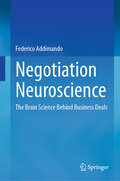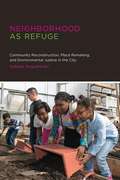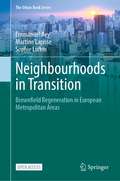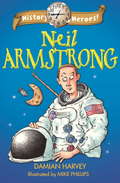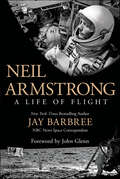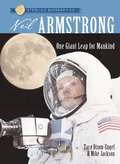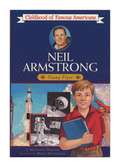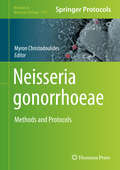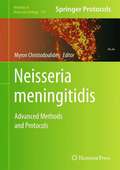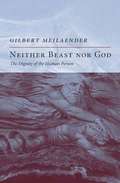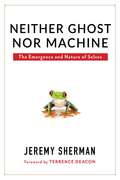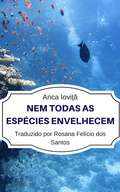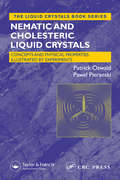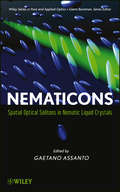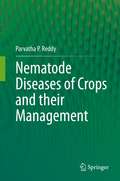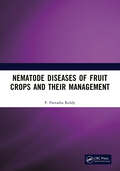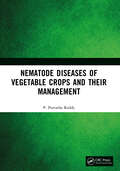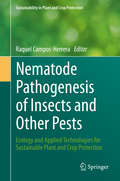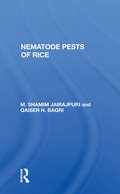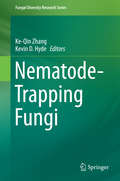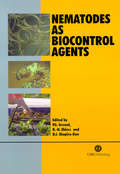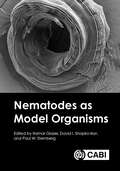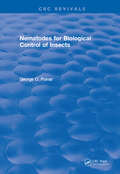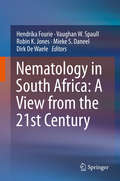- Table View
- List View
Negotiation Neuroscience: The Brain Science Behind Business Deals
by Federico AddimandoThe book delves into the fascinating intersection of neuroscience and negotiation, offering a groundbreaking exploration into how our brains influence and are influenced by the negotiation process. With an emphasis on practical application, this book is designed to equip readers with a deep understanding of the neurological mechanisms during negotiations, empowering them to optimize their approach and achieve better outcomes in business deals. Structured for both accessibility and depth, the book begins with an exploration of the fundamental principles of negotiation neuroscience, providing readers with a solid foundation of knowledge. It then progresses to more advanced topics, such as the role of emotions, cognitive biases, and decision-making processes in negotiations. Each chapter is rich with real-world examples, case studies, and practical tips, ensuring readers can immediately apply their newfound insights to their negotiation scenarios. In today's rapidly evolving business landscape, where successful negotiation skills are essential for navigating complex deals and relationships, understanding the neuroscience behind negotiation is more crucial than ever.
Neighborhood as Refuge
by Isabelle AnguelovskiEnvironmental justice as studied in a variety of disciplines is most often associated with redressing disproportionate exposure to pollution, contamination, and toxic sites. In Neighborhood as Refuge, Isabelle Anguelovski takes a broader view of environmental justice, examining wide-ranging comprehensive efforts at neighborhood environmental revitalization that include parks, urban agriculture, fresh food markets, playgrounds, housing, and waste management. She investigates and compares three minority, low-income neighborhoods that organized to improve environmental quality and livability: Casc Antic, in Barcelona; Dudley, in the Roxbury section of Boston; and Cayo Hueso, in Havana. Despite the differing histories and political contexts of these three communities, Anguelovski finds similar patterns of activism. She shows that behind successful revitalization efforts is what she calls "bottom to bottom" networking, powered by broad coalitions of residents, community organizations, architects, artists, funders, political leaders, and at times environmental advocacy groups. Anguelovski also describes how, over time, environmental projects provide psychological benefits, serving as a way to heal a marginalized and environmentally traumatized urban neighborhood. They encourage a sense of rootedness and of attachment to place, creating safe havens that offer residents a space for recovery. They also help to bolster residents' ability to deal with the negative dynamics of discrimination and provide spaces for broader political struggles including gentrification. Drawing on the cases of Barcelona, Boston, and Havana, Anguelovski presents a new holistic framework for understanding environmental justice action in cities, with the right to a healthy community environment at its core.
Neighborhood as Refuge: Community Reconstruction, Place Remaking, and Environmental Justice in the City (Urban and Industrial Environments)
by Isabelle AnguelovskiAn examination of environmental revitalization efforts in low-income communities in Boston, Barcelona, and Havana that help heal traumatized urban neighborhoods.Environmental justice as studied in a variety of disciplines is most often associated with redressing disproportionate exposure to pollution, contamination, and toxic sites. In Neighborhood as Refuge, Isabelle Anguelovski takes a broader view of environmental justice, examining wide-ranging comprehensive efforts at neighborhood environmental revitalization that include parks, urban agriculture, fresh food markets, playgrounds, housing, and waste management. She investigates and compares three minority, low-income neighborhoods that organized to improve environmental quality and livability: Casc Antic, in Barcelona; Dudley, in the Roxbury section of Boston; and Cayo Hueso, in Havana.Despite the differing histories and political contexts of these three communities, Anguelovski finds similar patterns of activism. She shows that behind successful revitalization efforts is what she calls “bottom to bottom” networking, powered by broad coalitions of residents, community organizations, architects, artists, funders, political leaders, and at times environmental advocacy groups. Anguelovski also describes how, over time, environmental projects provide psychological benefits, serving as a way to heal a marginalized and environmentally traumatized urban neighborhood. They encourage a sense of rootedness and of attachment to place, creating safe havens that offer residents a space for recovery. They also help to bolster residents' ability to deal with the negative dynamics of discrimination and provide spaces for broader political struggles including gentrification. Drawing on the cases of Barcelona, Boston, and Havana, Anguelovski presents a new holistic framework for understanding environmental justice action in cities, with the right to a healthy community environment at its core.
Neighbourhoods in Transition: Brownfield Regeneration in European Metropolitan Areas (The Urban Book Series)
by Sophie Lufkin Emmanuel Rey Martine LapriseThis open access book is focused on the intersection between urban brownfields and the sustainability transitions of metreopolitan areas, cities and neighbourhoods. It provides both a theoretical and practical approach to the topic, offering a thorough introduction to urban brownfields and regeneration projects as well as an operational monitoring tool. Neighbourhoods in Transition begins with an overview of historic urban development and strategic areas in the hearts of towns to be developed. It then defines several key issues related to the topic, including urban brownfields, regeneration projects, and sustainability issues related to neighbourhood development. The second part of this book is focused on support tools, explaining the challenges faced, the steps involved in a regeneration process, and offering an operational monitoring tool. It applies the unique tool to case studies in three selected neighbourhoods and the outcomes of one case study are also presented and discussed, highlighting its benefits.The audience for this book will be both professional and academic. It will support researchers as an up-to-date reference book on urban brownfield regeneration projects, and also the work of architects, urban designers, urban planners and engineers involved in sustainability transitions of the built environment.
Neil Armstrong (History Heroes #2)
by Damian HarveyNeil Armstrong was involved in one of the most memorable events of the twentieth century - the moon landing!Find out more about how he got to become one of the first to set foot on the moon.Discover the stories of people who have helped to shape history, ranging from early explorers such as Christopher Columbus to more modern figures like Tim Berners-Lee, inventor of the World Wide Web.These chapter books combine historical fact with engaging narrative and humourous illustration, perfect for the newly independent reader.
Neil Armstrong: A Life of Flight
by Jan BarbreeMuch has been written about Neil Armstrong, America's modern hero and history's most famous space traveler. Yet shy of fame and never one to steal the spotlight Armstrong was always reluctant to discuss his personal side of events. Here for the first time is the definitive story of Neil's life of flight he shared for five decades with a trusted friend – Jay Barbree.Working from 50 years of conversations he had with Neil, from notes, interviews, NASA spaceflight transcripts, and remembrances of those Armstrong trusted, Barbree writes about Neil's three passions – flight, family, and friends. This is the inside story of Neil Armstrong from the time he flew combat missions in the Korean War and then flew a rocket plane called the X-15 to the edge of space, to when he saved his Gemini 8 by flying the first emergency return from Earth orbit and then flew Apollo-Eleven to the moon's Sea of Tranquility. Together Neil and Jay discussed everything, from his love of flying, to the war years, and of course his time in space. The book is full of never-before-seen photos and personal details written down for the first time, including what Armstrong really felt when he took that first step on the moon, what life in NASA was like, his relationships with the other astronauts, and what he felt the future of space exploration should be.As the only reporter to have covered all 166 American astronaut flights and moon landings Jay knows these events intimately. Neil Armstrong himself said, "Barbree is history's most experienced space journalist. He is exceptionally well qualified to recall and write the events and emotions of our time." Through his friendship with Neil and his dedicated research, Barbree brings us the most accurate account of his friend's life of flight, the book he planned for twenty years.
Neil Armstrong: One Giant Leap for Mankind (Sterling Biographies)
by Mike Jackson Tara Dixon EngelEven at an age when other boys were just learning to drive, Neil was training to reach the skies. He went on to study aeronautical engineering, win medals as a fighter pilot, try out the X-15 experimental rocket plane, and become one of the elite few chosen to be a NASA astronaut…where he took the test pilot’s credo of “higher, faster and farther” to thrilling heights.
Neil Armstrong: Young Flyer
by Meryl Henderson Montrew DunhamRich or poor, great American men and women lived out childhoods as vastly different as the adults they became. Here young readers will learn about the early years of the first person to step foot on the moon, a historic feat he described as "one small step for man, one giant leap for mankind."
Neisseria gonorrhoeae: Methods and Protocols (Methods in Molecular Biology #1997)
by Myron ChristodoulidesThis detailed book addresses the continual development and application of new methods and protocols to understand the biology of the pathogen Neisseria gonorrhoeae. Beginning with gonococcus biology and antimicrobial resistance, the volume continues with areas of study such as producing major gonococcal antigens to high purity, genetic transformation of gonococci and strategies for global RNA sequencing, evaluation of potential vaccine/drug targets and the assessment of hypothetical protein function, as well as a number of methods and protocols for studying the biological interactions of the gonococcus and the host. Written for the highly successful Methods in Molecular Biology series, chapters include introductions to their respective topics, lists of the necessary materials and reagents, step-by-step, readily reproducible laboratory protocols, and tips on troubleshooting and avoiding known pitfalls. Comprehensive and cutting-edge, Neisseria gonorrhoeae: Methods and Protocols provides researchers with a foundation for progress toward the eventual control of this disease and a significant reduction in global case numbers of gonorrhea.
Neisseria meningitidis: Advanced Methods and Protocols (Methods in Molecular Biology #799)
by Myron ChristodoulidesNeisseria meningitidis is a major causative agent, worldwide, of potentially life-threatening meningitis and septicaemia, which carry with them a high mortality rate and permanent physical and neurological issues for survivors. Neisseria meningitidis: Advanced Methods and Protocols offers a collection of methods and protocols that reflect the development and refinement of several new technologies applied to the meningococcus as presented by expert researchers. Several of the chapters in this book describe methods that rely on the collection of complete sets of biological data, for example, using the genome to generate transcriptomes, proteomes, and metabolomes. Written in the highly successful Methods in Molecular BiologyTM series format, chapters include introductions to their respective topics, lists of the necessary materials and reagents, step-by-step, readily reproducible laboratory protocols, and tips on troubleshooting and avoiding known pitfalls. Authoritative and cutting-edge, Neisseria meningitidis: Advanced Methods and Protocols can be readily used to study other pathogens and diseases and should have broad appeal to clinical and non-clinical scientists alike; however, there is still much to learn about the meningococcus and its complex nature, which in turn continues to reveal crucial details about human biology as well.
Neither Beast Nor God
by Gilbert MeilaenderAppeals to "human dignity" are at the core of many of the most contentious social and political issues of our time. But these appeals suggest different and at times even contradictory ways of understanding the term. Is dignity something we all share equally, and therefore the reason we all ought to be treated as equals? Or is it what distinguishes some greater and more admirable human beings from the rest? What notion of human dignity should inform our private judgments and our public life?In Neither Beast Nor God, Gilbert Meilaender elaborates the philosophical, social, theological, and political implications of the question of dignity, and suggests a path through the thicket. Meilaender, a noted theologian and a prominent voice in America's bioethics debates, traces the ways in which notions of dignity shape societies, families, and individual lives, and incisively cuts through some common confusions that cloud our thinking on key moral and ethical questions. The dignity of humanity and the dignity of the person, he argues, are distinct but deeply connected--and only by grasping them both can we find our way to a meaningful understanding of the human condition.
Neither Ghost nor Machine: The Emergence and Nature of Selves
by Jeremy ShermanIf the universe is aimless, how do selves and aims emerge? Why do living beings have aims when inanimate things do not? Current science encourages us to reject the ghost-in-the-machine explanation—that something called spirit, soul, mind, or will was somehow breathed into matter—and instead accept that selves are just matter, in aimless mechanistic motion like everything else. But what about life’s many emergent qualities, the multifarious purposes that shape actual physical behavior not just in human lives, but in all of life? Even the simplest life forms have adaptive functions, traits that accomplish goals or ends. How can we explain the nature and origin of selves and aims without resorting to supernatural forces or explaining them away as nothing but cause-and-effect mechanisms?In Neither Ghost nor Machine, Jeremy Sherman explains the emergence of selves and aims in an aimless universe. He distills for a general audience the theory developed by renowned neuroscientist Terrence Deacon, which extends the breakthrough constraint-based insight that inspired evolutionary, information, and self-organization theory. Emergent dynamics theory provides a testable hypothesis for how mattering arose from matter, function from physics, and means-to-ends behavior from cause-and-effect dynamics. It offers a physics of purpose, demonstrating that there is a strictly physical explanation for the emergence and nature of selves and aims, one that shows our existence in an otherwise inanimate universe is not absurd. Neither Ghost nor Machine bridges the gap between the hard and soft sciences, suggesting fresh and exciting solutions to philosophical mysteries that have perplexed humanity for millennia, from free will to causality to morality.
Nem todas as espécies envelhecem
by Anca IoviţăO envelhecimento é um enigma a ser solucionado. Esse processo, tradicionalmente, é estudado por meio de alguns modelos biológicos, como a mosca-das-frutas, algumas espécies de nematoides, ratos e camundongos. O que todas essas espécies têm em comum é seu rápido envelhecimento, o que é excelente em termos de orçamento para um laboratório e uma ótima estratégia a curto prazo – quem dispõe do tempo necessário para estudar espécies que vivem por décadas? Mas as diferenças de expectativa de vida de uma espécie para outra são ordens de grandeza maiores do que qualquer variação de expectativa de vida que possa ser observada em laboratório. Foi isso o que me levou a estudar incontáveis fontes de informação numa tentativa de reunir pesquisas altamente especializadas em um livro de fácil compreensão. Queria enxergar a floresta além das árvores. Queria apresentar as diferenças de expectativa de vida entre as espécies por meio de uma sequência lógica e acessível. Este livro é minha tentativa de fazer justamente isso. Quais são os mecanismos subjacentes às diferenças identificadas no processo de envelhecimento entre uma espécie e outra? Escolhi intencionalmente escrever a resposta a essa pergunta em linguagem clara. O envelhecimento é um assunto importante demais para ficar escondido atrás das portas do jargão científico formal. Este livro não existiria se o chá verde, as bibliotecas e a Internet não tivessem sido inventados. Embora a quantidade de dados que pesquisei para identificar os padrões essenciais seja enorme, este livro não é exaustivo. Não se trata de um árido livro acadêmico. Tentei dar vida a um tópico extremamente importante para a extensão da expectativa de vida humana. Apenas você pode decidir se consegui atingir esse objetivo. Índice Enxergando a floresta além das árvores Confiabilidade é importante A matemática do envelhecimento
Nematic and Cholesteric Liquid Crystals: Concepts and Physical Properties Illustrated by Experiments (Liquid Crystals Book Ser.)
by Patrick Oswald Pawel PieranskiLiquid crystals allow us to perform experiments that provide insight into fundamental problems of modern physics, such as phase transitions, frustration, elasticity, hydrodynamics, defects, growth phenomena, and optics (linear and non linear). This excellent volume meets the need for an up-to-date text on liquid crystals.Nematic and Cholesteric Liq
Nematicons
by Gaetano AssantoThe first book of its kind to introduce the fundamentals, basic features and models, potential applications and novel phenomena and its important applications in liquid crystal technology.Recognized leader in the field Gaetano Assanto outlines the peculiar characteristics of nematicons and the promise they have for the future growth of this captivating new field.
Nematode Diseases of Crops and their Management
by Parvatha P. ReddyThis edited book provides knowledge about hemicelluloses biorefinery approaching production life cycle, circular economy, and valorization by obtaining value-added bioproducts and bioenergy. A special focus is dedicated to chemical and biochemical compounds produced from the hemicelluloses derivatives platform. Hemicelluloses are polysaccharides located into plant cell wall, with diverse chemical structures and properties. It is the second most spread organic polymer on nature and found in vast lignocellulosic materials from agro and industrial wastes, therefore, hemicelluloses are considered as abundant and renewable raw material/feedstock. Biorefinery concept contributes to hemicelluloses production associated with biomass industrial processes. Hemicelluloses are alternative sources of sugars for renewable fuels and as platform for chemicals production. This book reviews chemical processes for sugar production and degradation, obtaining of intermediate and final products, and challenges for pentose fermentation. Aspects of hemicelluloses chain chemical and enzymatic modifications are presented with focus on physicochemical properties improvement for bioplastic and biomaterial approaches. Hemicelluloses are presented as sources for advanced materials in biomedical and pharmaceutical uses, and as hydrogel for chemical and medicine deliveries. An interdisciplinary approach is needed to cover all the processes involving hemicelluloses, its conversion into final and intermediate value-added compounds, and bioenergy production. Covering this context, this book is of interest to teachers, students, researchers, and scientists dedicated to biomass valorization. This book is a knowledge source of basic aspects to advanced processing and application for graduate students, particularly. Besides, the book serves as additional reading material for undergraduate students (from different courses) with a deep interest in biomass and waste conversion, valorization, and chemical products from hemicelluloses.
Nematode Diseases of Fruit Crops and their Management
by P. Parvatha ReddySplit into six sections, this book collates information on the various aspects of nematode diseases of fruit crops and their management. The subject matter in this book discusses: International and Indian fruit crop scenario, food and nutritional security, bridging yield gap, and techniques to enhance productivity. Different aspects of nematode diseases in fruit crops such as economic importance, emerging nematode problems, interaction with other pathogens, and nematode management methods. Nematode diseases of tropical, sub-tropical, temperate, and semi-arid fruit crops and their management. The vision for the future including current nematode management strategies, new paradigms for nematode management, transfer of technology, future approaches, and conclusions. This book is aimed at policy makers, practicing farmers, and scientists involved in teaching, research and extension activities related to fruit crop nematodes and their management.Print edition not for sale in India.
Nematode Diseases of Vegetable Crops and their Management
by P. Parvatha ReddyThis book collates information on the various aspects of nematode diseases in vegetable crops and their management. The subject matter in this book discusses: Vegetable crop area, technological interventions to enhance productivity, post-harvest treatments, and integrated pest management. Different aspects of nematode diseases such as economic importance, emerging nematode problems, and major nematode pests and their interaction with other pathogens such as fungi, bacteria, and viruses). Regulatory, physical, cultural, chemical, biological, host resistance and integrated nematode management methods. Nematode diseases of mushrooms, root and leafy vegetables, and solanaceous, leguminous, cruciferous, cucurbitaceous, malvaceous and malvaceous crops. The vision for the future including integrated nematode management, pillars of INM, modifications and expansions to INM, new building blocks of INM, and conclusions. This book is aimed at policy makers, practicing farmers, and scientists involved in teaching, research and extension activities related to vegetable crop nematodes and their management.Print edition not for sale in India.
Nematode Pathogenesis of Insects and Other Pests
by Raquel Campos-HerreraAchieving a sustainable agriculture requires integrating advances in multiples disciplines, covering both fundamental and applied research in a common objective: enhancing crop health for better productions. This first volume of the Series "Sustainability in plant and crop protection" presents a comprehensive and multi-disciplinary compendium about the recent achievements in the use of entomopathogenic nematodes (EPNs) as biological control in a global scale. The volume is organized in a first section discussing the last discoveries on the biology and ecology of the EPN, a second section covering the advances on the EPN productions and release, and a third section with multiples case-studies in which the concepts and ideas on the two previous sections are integrated and discussed. An essential tool for researchers and professionals working to advance in the sustainable use of our resources.
Nematode Pests Of Rice
by M. Shamim JairajpuriThe triple alliance of pests, pathogens and weeds takes a heavy toll on the yield of rice. Nematodes in particular can cause considerable damage and also present great difficulties in their eradication. Because of difficulties in identification, many nematode pests of rice had gone unnoticed in the past. It is in this context that the present book
Nematode-Trapping Fungi
by Kevin D. Hyde Ke-Qin ZhangThese chapters provide up-to-date information on nematophagous fungi, particularly those of the Orbiliaceae in Ascomycota, whose asexual states produce nematode-trapping devices. The authors consider fungal-nematode interactions, fossil fungi, the biodiversity, ecology and geographical distribution of nematode-trapping fungi, and their potential use in biocontrol of nematodes, all in detail. Nematode-trapping fungi with adhesive or mechanical hyphal traps are the main focus of this book which begins with an overview of the data on nematode-trapping fungi, including their taxonomy, phylogeny and evolution. Subsequent chapters expand upon the methods and techniques used to study these fascinating fungi. Keys for genera of Arthrobotrys, Drechslerella and Dactylellina, which include all reported species of predatory orbiliaceous fungi are presented and numerous species from these genera are morphologically described and illustrated. The ecology of nematode-trapping fungi is expertly presented: their occurrence and habitats, their geographical and seasonal distribution and the effects of soil conditions and nematode density on their distribution all feature amongst the relevant themes. Further chapters examine the use of nematode-trapping fungi in biological control and the authors consider nematicidal activities in detail, exploring the many compounds from fungi that feature in nematicidal activities and of course useful paths for further study on this topic. This is a highly informative and carefully presented book, providing scientific insight for scholars with an interest in fungi and in biological control of nematodes.
Nematodes as Biocontrol Agents
by Parwinder S. Grewal Ralf-Udo Ehlers David I. Shapiro-IlanThis book aims to document and illustrate the major developments in the use of nematodes for biological control of insects and slugs. It has three major sections covering entomopathogenic nematodes, entomophilic nematodes, and slug-parasitic nematodes. Each of these sections discusses biology, commercial production, formulation and quality control, application technology, strategy and safety.
Nematodes as Model Organisms
by S. Patricia Stock Raquel Campos-Herrera Anil Kumar James Dillon Dayong Wang Ratnasri Pothula Birgit Gansfort Sebastian Höss Sigal Braun Miyara Fernando Calahorro Ioannis Eleftherianos Katarzyna Dudkiewicz Heidi Goodrich-Blair Alex S. Grossman Selcuk Hazir Jennifer K. Heppert Ivan Hiltpold Lindy Holden-Dye Emilie Lefoulon Edwin E. Lewis James W. Lightfoot Terra J. Mauer Vincent O’Connor Elizabeth M. Ransone Sara Sánchez Moreno Glen Stevens Ralf J. Sommer Ghada Tafesh-Edwards Heidi A. Tissenbaum Professor Walter Traunspurger Robert J WalkerNematodes are small multicellular organisms that have been used as biological models since the 1960s. For example, Caenorhabditis elegans is a free-living nematode worm, about 1mm in length, that lives in temperate soil environments. It is made up of about 1000 cells, and has a short life cycle of only two weeks. It was the first multicellular organism to have its whole genome sequenced. The book summarizes the importance of nematodes as model organisms in the fields of genetics, developmental biology, neurobiology, pharmacology, nutrition, ecology and parasitology. Of interest to a broad audience across a wide spectrum of disciplines, this book is useful for biologists working on comparative studies to investigate biological processes across organisms; medical scientists and pharmacologists for exploration of drugs and medicine (including the use of genome editing to eliminate diseases); ecologists considering nematodes as indicators for environment changes; and parasitologists for host-parasite interactions. Many other researchers can use this book as a benchmark for the broad implications of nematology research on other aspects of science.
Nematodes for Biological Control of Insects
by George O. PoinarThis book discusses nematodes for biological of insects. The book includes the following chapters; classification of nematode, key to entomogenous nematodes, nematode groups, microorganisms associated with entomogenous nematodes, immunity to entomogenous nematodes, natural enemies of entomogenous nematodes, environmental impact of entomogenous nematodes, and future prospects.
Nematology in South Africa: A View from the 21st Century
by Hendrika Fourie Vaughan W. Spaull Robin K. Jones Mieke S. Daneel Dirk De WaeleThis unique book contains not only a comprehensive up-to-date summary of the achievements made in all areas of Nematology in South Africa over more than half a century, but it also combines this rather technical part with an insiders narrative of how Nematology started and developed. It also demonstrates how the South African community of nematologists gradually adapted to major changes in agriculture. These were due to a major political shift followed by socio-economic changes and this in an often challenging natural environment. At the same time this book is conceived as a useful source for young scientists to provide them with practical knowledge and critical insight in the field of Nematology. The information given is based primarily on research conducted by nematologists in South Africa. Most of this research was aimed at finding workable solutions for nematological problems confronted by both large-scale commercial producers and smallholding farmers. During a period when funding for scientific research is becoming increasingly scarce, the future demand and quest for practical solutions by applied research will only increase.
